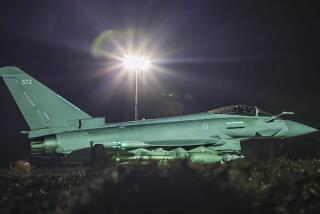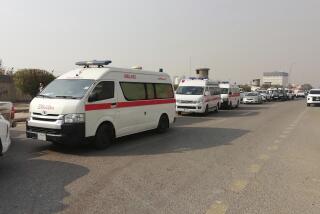Apparent drone strike kills Pakistan Taliban and Al Qaeda figure
Reporting from Islamabad, Pakistan — An apparent U.S. drone strike early Thursday in northwest Pakistan killed a top Pakistani Taliban commander also serving as a key Al Qaeda operative, local officials said.
The death of Badar Mansoor, 35, comes as the United States steps up its pace of drone missile attacks following a six-week hiatus after an airstrike accidentally killed Pakistani soldiers near the Afghan border in November.
Thursday’s predawn strike occurred in North Waziristan, the volatile tribal region that serves as a sanctuary for several militant groups, including the Pakistani Taliban and the wing of the Afghan Taliban known as the Haqqani network. The blast hit Mansoor’s compound near a cattle market in Miram Shah, North Waziristan’s largest town.
Pakistani intelligence sources described Mansoor as an Al Qaeda operative who also led a faction of the Pakistani Taliban, the homegrown insurgency. He was believed to be from Punjab, the country’s most populous province, and was responsible for bringing scores of Punjabi militants to Taliban camps in North Waziristan.
The strike was the second in North Waziristan in a week. A presumed U.S. missile attack Wednesday on a hide-out belonging to militants loyal to Mansoor killed 10 of them in the village of Spelga, local officials said.
The step-up in drone strikes comes as elevated tension has been easing between Washington and Islamabad after errant U.S. airstrikes Nov. 26 that killed 24 Pakistani soldiers.
In that incident, a Pentagon investigation concluded that American forces acted in self-defense after a special operations unit scouring an Afghan village for militants and weapons caches came under heavy machine-gun fire and mortar shelling from a ridgeline across the border where the Pakistani army had outposts.
That airstrike infuriated Pakistani leaders, who retaliated by shutting down border crossings used by convoys delivering supplies to NATO forces in Afghanistan. They also ordered the U.S. to vacate an air base in southern Pakistan that is believed to have been involved in CIA drone attacks.
The incident further damaged ties between the U.S. and Pakistan at a time when Islamabad is needed to help broker peace talks with Afghan Taliban insurgents that find shelter in Pakistan’s tribal border region.
The U.S. halted drone strikes on suspected militant strongholds in the tribal areas for six weeks, and resumed the missile campaign Jan. 11. That attack in North Waziristan killed a top Al Qaeda planner, Aslam Awan, and since then Washington has carried out several drone strikes in the tribal region.
Pakistani officials have signaled that they may soon reopen the country’s border crossings used by North Atlantic Treaty Organization convoys.
In another sign that tension between the two countries is easing, U.S. Marine Corps Gen. James N. Mattis, commander of U.S. Central Command, is reportedly scheduled to meet with Pakistani army chief Gen. Ashfaq Kayani this month to discuss the Nov. 26 border incident. It would be the first visit by a high-ranking U.S. official since the deaths of the Pakistani soldiers.
More to Read
Sign up for Essential California
The most important California stories and recommendations in your inbox every morning.
You may occasionally receive promotional content from the Los Angeles Times.










